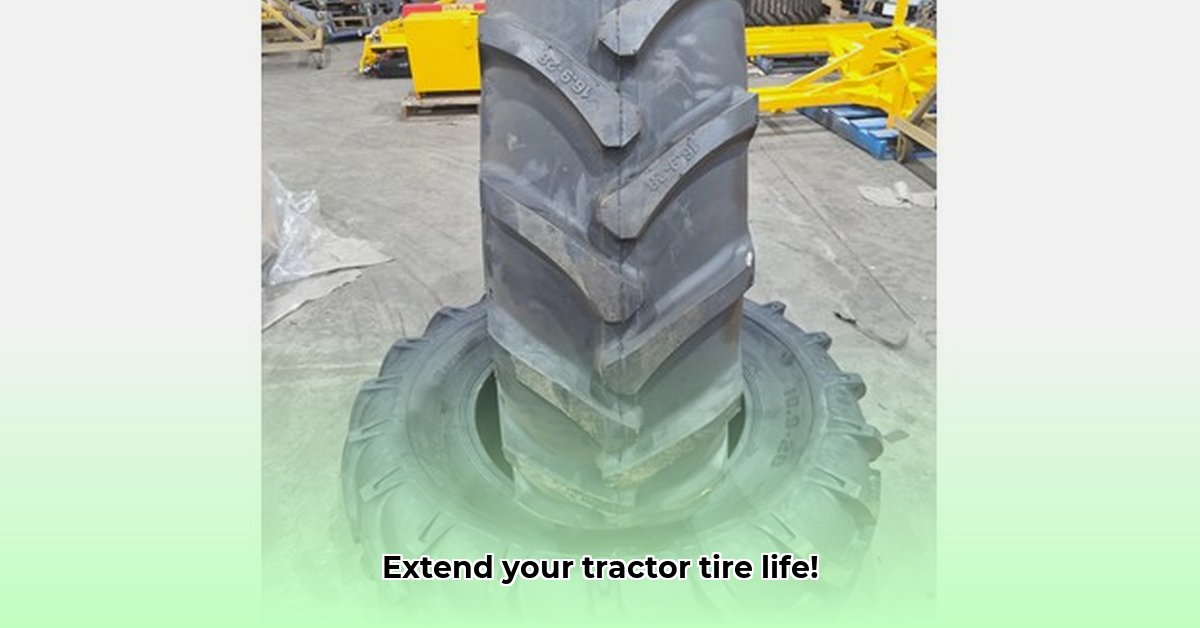
Tired of the high cost of constantly replacing tractor tires? This guide provides actionable steps to maximize the lifespan of your 16x9x28 tires, saving you money and contributing to environmentally sustainable farming practices. We'll cover everything from smart tire selection and proper inflation to routine maintenance and responsible disposal, ensuring your tires deliver maximum value and efficiency. For more on tire sizing, see this helpful guide: [Tire Sizing Explained](https://tractor-tire-sizing-explanation.pages.dev).
Understanding Your 16x9x28 Tractor Tires
The 16x9x28 tractor tire is a common size often used for lighter farm tasks such as hay baling, planting, and light tillage. They provide a balance between traction and flotation, minimizing soil compaction. However, performance varies depending on construction and intended use. Choosing the right tire is vital for efficiency and cost-effectiveness.
Key Specifications of 16x9x28 Tractor Tires
| Specification | Description |
|---|---|
| Size | 16x9x28 |
| Typical Application | Lighter farm tasks: hay baling, planting, light tillage |
| Load Capacity | Varies; check manufacturer specifications for your specific tire. |
| Common Uses | Tasks requiring good traction and moderate load capacity |
Always refer to the manufacturer's sidewall markings for accurate load limits and inflation pressures. This information is critical for safe and efficient operation.
Factors Influencing 16x9x28 Tire Lifespan
Several factors significantly impact tire longevity. Understanding these factors allows for proactive measures to extend tire life and reduce replacement costs. Isn't maximizing the return on your tire investment a top priority?
1. Maintaining Correct Tire Inflation
Maintaining proper inflation pressure is paramount. Underinflation causes excessive flexing, heat buildup (leading to premature wear), and reduced fuel efficiency. Overinflation, conversely, can cause uneven wear and damage to the sidewalls. Regularly check pressure using a reliable gauge – before and after each workday is ideal.
2. Operating Conditions and Soil Type
Harsh terrains (rocky fields, etc.) accelerate wear. Working wet, sticky soil also increases wear. Avoid aggressive driving on rough surfaces. Consider specialized tires for challenging conditions. Regular cleaning removes damaging debris and build-up.
3. Load Management and Weight Distribution
Overloading your tractor severely impacts tire life. Ensure weight is evenly distributed. Always consult your tractor's manual for maximum weight limits.
4. Regular Inspections and Maintenance
Regular inspections (at least weekly) are crucial. Check for cuts, embedded objects, and uneven wear patterns – small issues addressed early prevent bigger, more costly problems. Rotate tires to ensure even wear. When should you rotate your tires?
Selecting and Purchasing the Right 16x9x28 Tire
Choosing the right tire involves considering several factors:
Ply Rating: Higher ply ratings indicate greater strength and durability, translating to longer lifespan but a higher initial cost. A higher ply rating means increased capacity and longevity.
Tread Pattern: Select a tread pattern suited to your typical working conditions (e.g., aggressive treads for muddy fields, smoother treads for paved surfaces).
Budget: While premium tires cost more upfront, their longer lifespan often leads to significant long-term cost savings.
Consult with a tire specialist or your equipment dealer for expert advice tailored to your specific needs and budget. What's your typical operating environment?
Tire Maintenance and Repair: A Step-by-Step Guide
Preventative maintenance significantly extends tire life.
Monthly Inflation Checks: This simple habit prevents many problems.
Visual Inspections: Regularly inspect for cuts, embedded objects, or bulges.
Tread Depth Measurement: Use a tread depth gauge to monitor wear and plan for replacement.
Professional Repairs: For severe damage, consult a qualified tire professional. Consider patching small punctures; for major damage, replacement is usually necessary.
End-of-Life Management: Environmentally Responsible Disposal
When tires reach end-of-life, responsible disposal is crucial. Explore recycling options or local agricultural tire disposal programs. Retreading may be possible for some tires, offering a sustainable alternative.
Economic Considerations: Total Cost of Ownership
The upfront cost of a high-quality 16x9x28 tire is often offset by its longer lifespan, reduced maintenance, and minimized downtime compared to cheaper alternatives. Consider the total cost of ownership, encompassing purchase price, maintenance, and eventual replacement. What are the lifetime cost benefits of selecting a superior tire?
Conclusion: Practical Steps for Sustainable Farming
Proactive tire management is essential for sustainable and profitable farming. By following these practical steps, farmers can significantly extend the lifespan of their 16x9x28 tires, saving money, reducing environmental impact, and maximizing efficiency. Remember, proper inflation, regular maintenance, and smart purchasing decisions are key to long-term success.